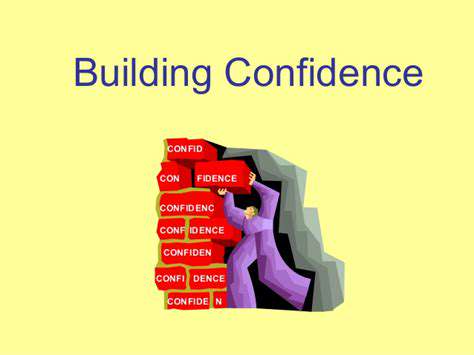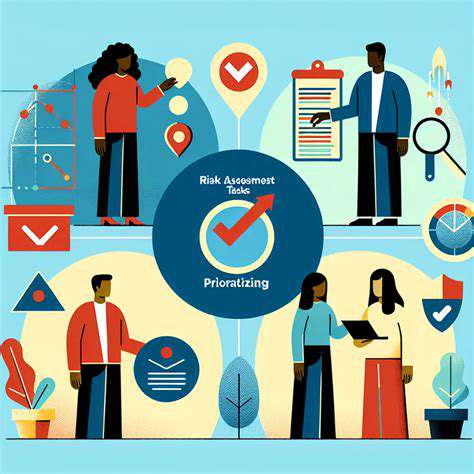Helping Your Puppy Feel Comfortable Around Bicycles and Skateboards
Introducing New Environments
Environmental socialization benefits from systematic exposure. Create a checklist of surfaces (grass, gravel, tile), obstacles, and spatial configurations to introduce methodically. Bring familiar bedding or toys to new locations to provide continuity. Always assess environments for potential hazards beforehand - loose wires, toxic plants, or unstable furniture can create negative experiences.
For urban puppies, design sound walks where you gradually increase environmental complexity. Start in quiet alleys, progress to residential streets, then busier commercial areas - always monitoring stress signals. Carry high-value treats to create positive associations with each new location. This structured approach prevents sensory overload while building urban adaptability.

Introducing Controlled Movement and Sounds
Understanding Controlled Movement
Movement training extends beyond physical coordination to emotional regulation. Implement red light/green light games where the puppy learns to alternate between movement and stillness on cue. This builds impulse control while demonstrating that restraint leads to rewards. Use varied surfaces (carpet, hardwood, pavement) to develop proprioceptive awareness - crucial for confidence in unfamiliar settings.
When introducing novel movement experiences like elevators or escalators, first allow the puppy to observe the mechanism from a safe distance. Use targeting exercises to build confidence approaching the moving object before attempting interaction. This graduated exposure prevents traumatic experiences that could create lasting phobias.
Managing Sounds in the Puppy's Environment
Create a sound hierarchy tailored to your puppy's reactions. Catalog noises from least to most concerning, then design exposure sessions accordingly. For noise-sensitive puppies, incorporate sound play during nap times when their arousal levels are naturally lower. This capitalizes on biological rhythms to maximize learning potential.
Implement sound pairing exercises where you play recorded noises at sub-threshold volumes while engaging the puppy in enjoyable activities. Gradually increase volume over sessions, always remaining below the reaction threshold. This systematic desensitization rewires emotional responses at the neurological level.
The Connection Between Movement and Sound
The audiomotor connection presents unique training opportunities. Teach sound markers where specific noises predict particular movements - a bell meaning come, a whistle indicating sit. These conditioned responses provide cognitive anchors during potentially overwhelming situations. This predictive framework reduces uncertainty, a primary source of canine anxiety.
When unexpected noises occur, immediately engage the puppy in familiar obedience routines. This redirects focus while demonstrating that startling events don't disrupt normal expectations. Maintain this consistency even during environmental changes to reinforce stability.
Building Trust Through Consistency
Develop ritualized routines around potentially stressful events. For example, always play a specific song before vacuuming, or use a particular leash for car rides. These predictable sequences create psychological safety through anticipation. Document responses in a training journal to identify patterns and adjust protocols accordingly.
Remember that trust develops through thousands of positive micro-interactions. Each predictable, reward-based experience strengthens the puppy's confidence in their environment and handlers. This foundation proves invaluable during adolescence when developmental changes can temporarily increase anxiety levels.
Traditional Irish music offers an apt metaphor for puppy socialization. Just as uilleann pipers spend years mastering breath control and finger technique, effective socialization requires patient, incremental skill-building. The bodhrán's alternating strong and weak beats mirror the rhythm of proper exposure therapy - periods of challenge balanced with recovery. Modern canine science confirms what traditional trainers understood intuitively: lasting behavioral change grows from respectful, individualized training approaches.
Using Distraction Techniques for Overcoming Anxiety
Understanding the Link Between Distraction and Anxiety
Effective distraction operates on neurobiological principles. By engaging the seeking system (the brain's reward anticipation network), we can override activation of fear circuits. This isn't mere avoidance but rather neural competition - creating stronger positive pathways that gradually dominate reactive responses. The timing of distraction proves critical; implement interventions at the first signs of tension, before full anxiety escalation.
Recognize that distraction serves different functions at various developmental stages. For young puppies, it primarily prevents negative associations from forming. For older dogs with established anxieties, it helps create competing positive associations during systematic desensitization protocols.
Choosing Appropriate Distractions for Puppies
Match distraction difficulty to the puppy's current capabilities. Overly complex puzzles may frustrate, while excessively simple tasks won't sufficiently engage. Rotate three to five distraction options to prevent habituation. Include various categories: food-based (stuffed Kongs), movement-based (flirt poles), and social (tug games with familiar people).
For sound-sensitive puppies, incorporate white noise machines during distraction sessions to gradually increase auditory tolerance. The consistent background noise helps mask sudden environmental sounds while the puppy focuses on the primary distraction task.
Implementing Distraction Techniques Effectively
Structure distraction sessions using the 3D framework: Distance (start far from triggers), Duration (brief successful sessions), and Difficulty (gradually increasing challenges). Always set the puppy up for success by beginning below their reaction threshold. Capture and reward any voluntary disengagement from stressors, as this self-regulation represents ideal emotional control.
Use distraction transitions strategically. If a noise interrupts play, immediately introduce a new engaging activity rather than allowing the puppy to fixate on the disturbance. This teaches adaptive coping mechanisms rather than avoidance behaviors.
Combining Distraction with Other Calming Strategies
Integrate distraction with physiological calming techniques. Pair food puzzles with calming massage when introducing challenging environments. Combine scent work (hiding treats) with pheromone diffusers in anxiety-provoking locations. This multimodal approach addresses anxiety through multiple neural pathways simultaneously.
For persistent anxiety cases, develop a coping ladder that sequences distraction with other interventions. Might begin with distance increase, add white noise, then introduce a high-value distraction, finally incorporating calming touch. This structured escalation provides multiple tools for managing progressively challenging situations.











